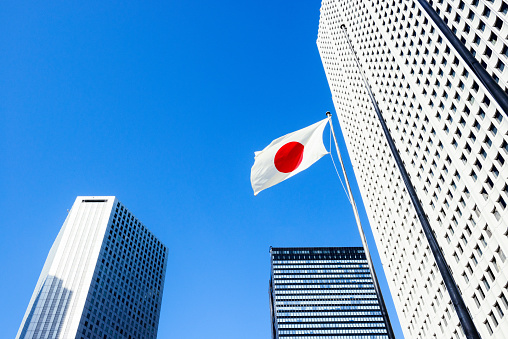The Economy of Japan
The economy of Japan is based on exports of raw materials, industrial and research-oriented products, petroleum and agricultural products. It is also among the world’s top importers of agricultural products. The country has a very large wholesale market for primary products, which includes the renowned Tsukiji fish market. However, the country has been challenged in the past for its whaling practices, which are illegal under international law.
Exports
Japan is one of the world’s largest exporters and importers, and trade accounts for a quarter of its GDP. The country’s most significant exports include vehicles, machinery, and manufactured goods. Japan also imports minerals, machinery, and food. Its top five export products in 2019 were automobiles and automotive parts, electrical machinery, and machinery and equipment.
As a trading nation, Japan has an extensive network of trade and industry associations and chambers of commerce. Two of the most prominent are the Japan External Trade Organization and the Japan Business Federation, which was formed by the 2002 merger of the Japan Federation of Economic Organizations and the Japan Federation of Employers’ Association.
Japan’s total exports comprised about 13.4% of its overall GDP in 2021, or $5.634 trillion in Purchasing Power Parity US dollars. This is an increase over the 12.3% recorded in 2020. The economy of Japan has become increasingly dependent on its exports to maintain its competitiveness and growth.
During World War II, Japan’s exports were only five percent of world trade, but the amount grew five-fold after the war. In 1946, Japanese exports were $100 million, but by 1956, they were more than $2 billion. This is a remarkable achievement.
Agriculture
There are many challenges for agriculture in Japan. While many young people in Japan are drawn to jobs in science and technology, some view farming as too risky and too expensive. This misinformation can discourage students from pursuing careers in agriculture and lead them to choose another career path. In addition, farming is considered a private enterprise and the initial capital required to begin is a significant barrier for many young people.
Farmers are ageing rapidly, and 60% of the farmer population is over 65. This will result in a reduced level of domestic farming business and a reduction in agricultural revenues. It will also increase Japan’s reliance on foreign countries for food, which will increase import expenses. With this in mind, many young people are turning to office jobs in the cities instead of farms.
In addition to the challenges faced by farmers in the urban areas, the cost of maintaining productive farmland in urban areas can be high. Agricultural land in Japan is subject to high taxes, including inheritance taxes. However, special provisions in national legislation provide tax exemptions for farmers, and city incentives also contribute to this. But high urban real estate prices and tough compliance requirements drive many farmers away from farming in the urban areas.
Another issue facing agriculture is the aging population and a shortage of youth. In areas such as Hokkaido, the aging population makes it difficult to recruit sufficient labor. Youth in city areas are oriented toward science and technology, while youth in rural areas are mainly interested in agriculture. Proper counseling of adolescents can help them make the best possible career choice.
Public works
Despite the strong economic growth of the U.S. over the past decade, Japan’s economy has experienced sluggish growth over the same period. In this article, we analyze the trends of public works spending in both countries and explore the role of infrastructure in promoting economic growth. We also look at recent developments in public works literature, institutions, and patterns.
Public works are a major part of the Japanese government’s budget. In 2003, the government allocated $208 billion to public works projects, or about 40 percent of the country’s total budget. In addition, the construction industry is politically influential and a large sector of the Japanese economy. Over the past few years, the Liberal Democratic Party has built up the industry’s political support through a series of expensive public works programs. For instance, nearly half of the fiscal stimulus package passed by the government in November 1998 was spent on public works. Between 1991 and 2000, the government gave the construction industry 59 trillion yen worth of orders. This amount represented more than 30 percent of the total construction business, although the number of orders has dropped to 25 percent from 2001 to 2004.
Japan’s public works spending has reached record highs, even for a country with an economy that relies on private investment. Most public works projects are funded through the Fiscal Investment and Loan Program and local banks controlled by the Ministry of Finance. As a result, these government funds are taken away from research and development projects. In fact, this spending has contributed to the national debt as a whole.
Economic reforms
Recent decades have seen Japan’s economy experience moderate growth, but this growth has been tempered by concerns over debt and structural reform. The election of Donald Trump has also complicated the country’s economic policymaking. What are the possible outcomes of Japan’s current economic policies? Is it possible for the government to achieve more balanced reforms than past administrations?
The Japanese government has a long history of governing its economy through the Ministry of Finance. But in recent years, this ministry has lost much of its influence. Moreover, it has been the subject of many scandals and accusations of conflict of interest. While its policies have failed to combat Japan’s severe recession, they have remained the world’s number-one creditor.
Some critics believe Japan must open its markets to make the economy more competitive. The government has taken a step towards this goal, but the reforms have been slow. While some Japanese companies have adjusted and become more competitive, some others remain weak and drag down the economy. Fortunately, the government has passed new laws that make it easier to split up and spin off companies. These laws have also forced companies to cut spending and disclose hidden debts.
Japan’s political economy has undergone significant changes in the past 30 years. The country’s financial system and economic growth policies are central elements in its political economy, and they are the main drivers of Japan’s economy. By taking a political economy perspective, researchers can link economic reforms to institutional changes in Japan.
Trade liberalisation
Japan has experienced a period of trade liberalisation that has boosted its economy and reduced its trade barriers. By the end of the 2000s, MFN tariffs were abolished in 42% of its tariff lines. In addition, Japan has engaged in several negotiations on free trade agreements, believing that they will lead to greater trade liberalisation. The country also has a number of bilateral initiatives to improve market access, competition, and intellectual property rights.
Although Japan has not traditionally imported large amounts in terms of GNP, it has relied on imports to supply its economy with crucial raw materials. Unlike other industrialized nations, it has relied more on imports of these materials and a broader range. In the late 1980s, imports of mineral fuels accounted for over half of its total imports. But by 1988, imports had decreased to under twenty-one percent, and by 1991, imports of mineral fuels had risen to nearly thirty-one percent of total imports.
In the postwar period, Japan maintained heavy import barriers. Many products were subject to quotas and had high tariffs. Moreover, the Ministry of International Trade and Industry (MITI) had the power to allocate foreign exchange. These policies were justified by the weakened position of Japanese industry and the country’s chronic trade deficit.



